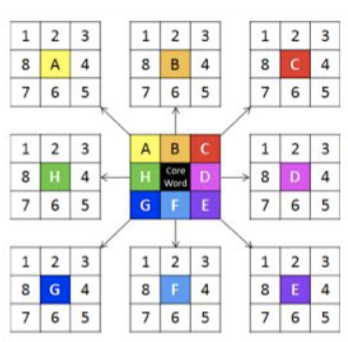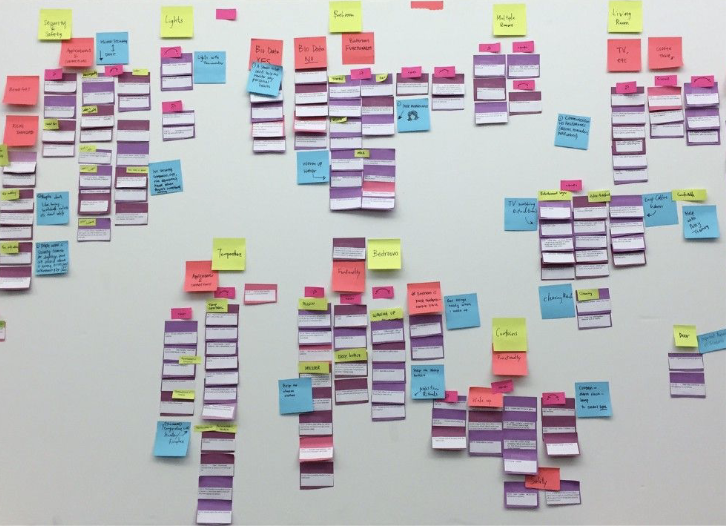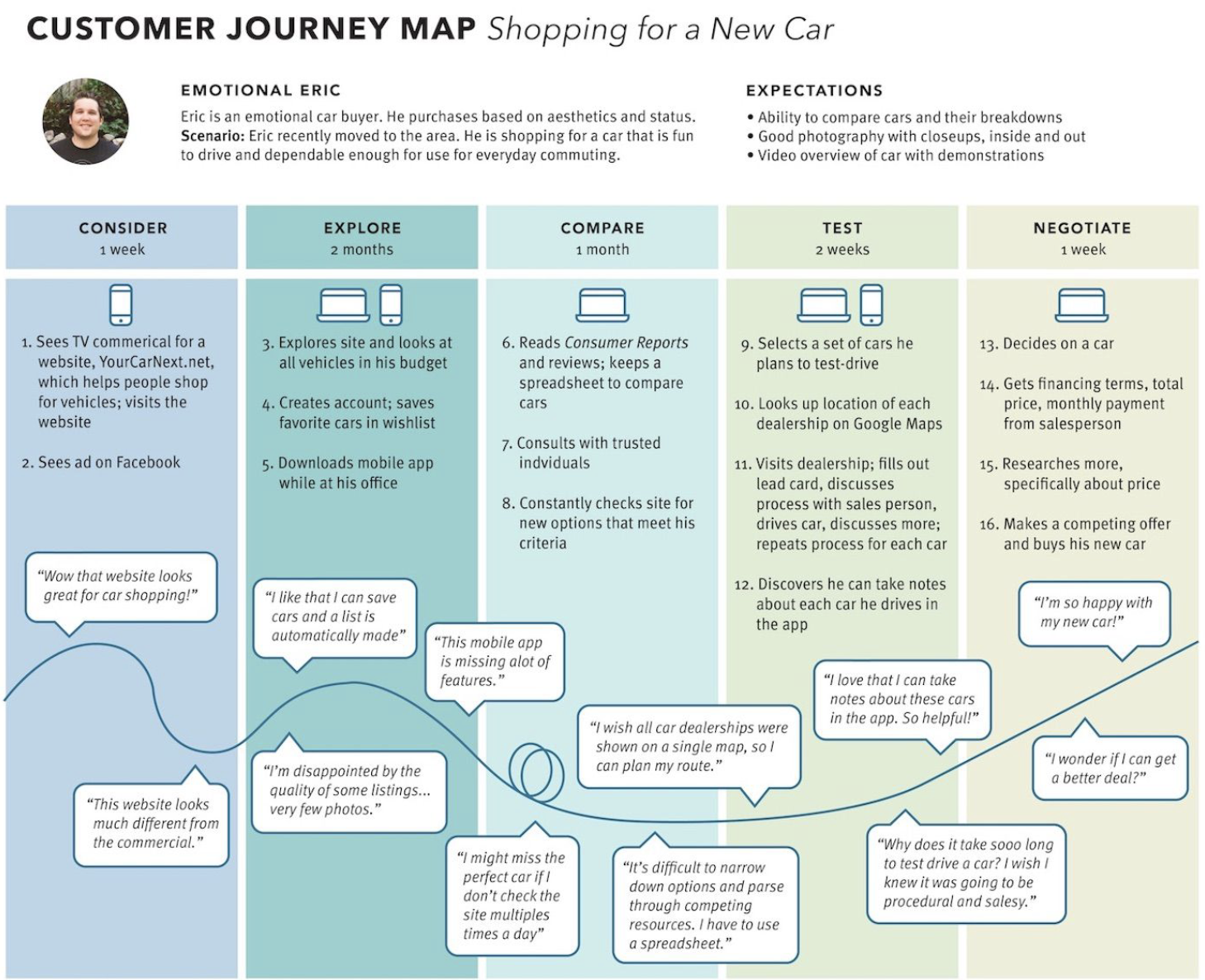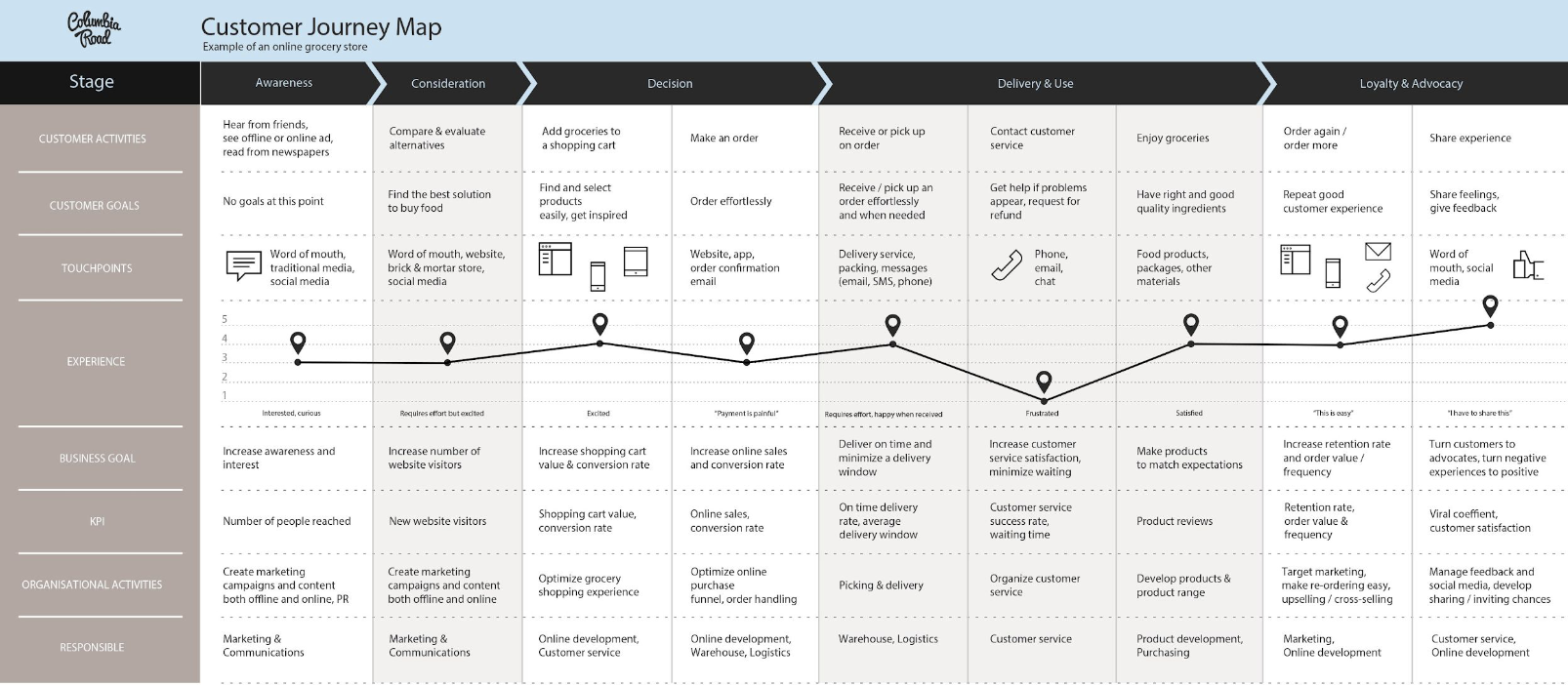04 - Session 4 - IE
[[4 - Session 4 - IE.pdf]]
Lotus Blossom

- Make a central matrix of the topic (3x3)
- Around the centre cell, put ideas related to it: things that need to be addressed
- Expand each perimeter cell into an other matrix
Creative Matrix

- Tool to generate ideas in a structured way, that fosters cross-pollination as we are looking to fill with ideas each cell where topics intersect
- It’s often used with columns as categories related to people (e.g., personas, market segments...) and the rows as categories for enabling solutions (e.g., technologies, environments...)
- Is not intended to be limited to one single idea per cell, and participants can take advantage of these “mashups” of categories to generate a wide range of concepts for each one
Affinity Clustering

- Method used to organize many ideas into groups with things in common
- Useful to analyse large amounts of data and to discover hidden relationships
- We can make use of headers, subheaders, clusters, arrows, etc… anything graphical aid that helps to see the bigger picture
More on discovery process
Problem space
Interviews/surveys
- According to IDEO:
- Getting to know your customers is the first step toward creating products and services they want and need.
- Don’t assume you know what someone thinks or feels
- Gathering information about your target consumer is a critical piece of the design thinking approach
- Therefore, the aim of the interviews is to challenge assumptions and generate a large number of ideas.
Interview
- Expand Solution Space: Gain diverse stakeholder insights for a broader idea range
- Inspire Innovation: Foster brainstorming for creative problem solutions
- Filter Ideas: Generate many ideas, then narrow to the most promising
- User-Centric Solutions: Ensure desirability, business viability, and technologica
Interviews vs Surveys
- Interviews: One-on-one verbal conversations, gathering primarily qualitative through open-ended questions. More time(resource)-intensive due to depth, but allows exploration of specific topics and follow-up
- Surveys: Written questionnaires; self-administered, both quantitative (closed-ended) and qualitative (open-ended) questions. Time-saving; no scheduling constraints. Suitable for larger, broader audience sampling
- Surveys give topic overviews; interviews delve deeper into subtopics/motivations. Choice depends on objectives, audience, and resources.
User Jurney

- Customer jurney map aka customer experience map aka journey
- It refers to the product of an interaction between an organization and a customer over the duration of their relationship
- During their experience, this interaction is made of three parts
- Customer journey
- Brand touchpoints the customer interacts with the environments the customer experiences
Resource: https://www.nngroup.com/articles/analyze-customer-journey-map/


